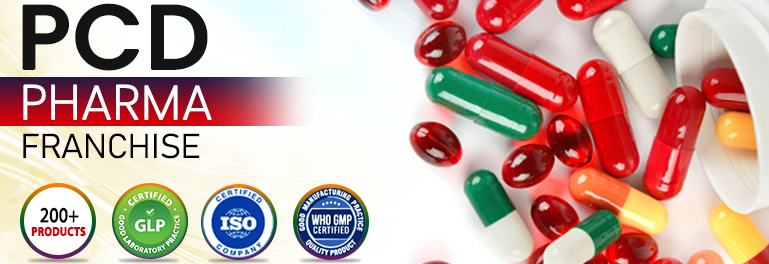A Guide for Starting Nutraceutical Business

A Guide for Starting Nutraceutical Business- The global wellness revolution is in full swing, and at its heart lies the booming nutraceutical industry. A powerful fusion of "nutrition" and "pharmaceutical," this sector encompasses dietary supplements, functional foods, and medicinal beverages designed to provide health benefits beyond basic nutrition. Driven by a profound shift towards preventive healthcare, an aging population seeking healthier lives, and a growing body of scientific research, consumers are actively taking charge of their well-being. This has created an unprecedented demand for high-quality, effective nutraceutical products that support everything from immune function and cognitive health to active lifestyles and overall vitality.
This surge in consumer awareness and self-care isn't just a trend; it's a fundamental change in how we approach health. For visionary entrepreneurs, this represents a golden opportunity to build a meaningful and profitable business. However, navigating the journey from concept to successful brand involves intricate steps, from stringent regulatory compliance and scientific formulation to strategic branding and marketing. In this comprehensive guide, Lifegenix will provide you with a guide for starting nutraceutical business, breaking down the critical stages of starting your own nutraceutical business and setting you on the path to success in this dynamic and rewarding industry.
What is a Nutraceutical Business? A Clear Definition
A nutraceutical business operates at the intersection of nutrition and pharmaceuticals, focusing on products that provide health benefits beyond basic nourishment. This includes dietary supplements, functional foods, and beverages designed to support wellness, improve health, and reduce the risk of chronic conditions. Unlike pharmaceuticals, which treat diseases, nutraceuticals emphasize prevention and optimal physiological function, making them a cornerstone of proactive health management. This clear definition underscores the industry’s unique role in bridging science-backed nutrition with consumer-driven demand for natural, holistic well-being solutions.
To transform this concept into a successful enterprise, a clear roadmap is essential, so here is a list given below providing a step-by-step guide for starting your nutraceutical business.
Step 1: Understanding the Nutraceutical Industry Landscape
Before launching your venture, a deep understanding of the industry's dynamics is crucial. This involves analyzing current market trends, identifying high-demand niches, and thoroughly researching your target audience and competitors.
A well-mapped landscape allows you to spot opportunities, anticipate challenges, and position your brand for success from the very start.
Step 2: Identifying Your Niche and Target Market
The key to standing out in a crowded market is to specialize, not generalize. Begin by focusing on a specific segment.
- Analyze emerging wellness trends like stress support, gut health, or healthy aging.
- Identify a specific, underserved audience, such as athletes, busy professionals, or new parents.
- Research your competitors to find a gap in the market you can uniquely fill.
- Align your niche with your own expertise and passion for authentic branding.
- Validate your idea by ensuring there is a proven consumer demand and willingness to pay.
Step 3: Developing Your Nutraceutical Business Plan
A comprehensive business plan is your strategic blueprint, essential for securing funding and guiding your decisions. It should clearly define your mission, unique value proposition, and detailed financial projections, including startup costs and profitability timelines. This document forces you to think through every critical aspect, from marketing strategy and operational logistics to risk assessment, setting a clear course for growth and scalability.
Step 4: Navigating Regulatory Compliance and Licensing
This is the most critical step for ensuring your business is legitimate and avoids costly legal pitfalls. You must understand and adhere to regulations set by the FDA under the Dietary Supplement Health and Education Act (DSHEA), which governs areas like labeling, claims, and Good Manufacturing Practices (cGMP). Properly navigating this complex landscape is non-negotiable for product safety and market access.
Step 5: Product Development and Formulation Strategies
This phase transforms your concept into a tangible, market-ready product.
- Decide between white-label, private label, or custom formulation.
- Source high-quality, bioavailable ingredients from reputable suppliers.
- Ensure your formulation is backed by scientific research for efficacy.
- Develop a prototype and conduct rigorous stability and third-party testing.
- Design a user-friendly dosage form (e.g., capsules, tablets, gummies).
- Create a compelling brand story around your product's benefits.
Step 6: Manufacturing, Supply Chain, and Quality Assurance
This step is about turning your formulation into a consistently high-quality product you can reliably deliver to customers.
Manufacturing: Selecting a cGMP-compliant contract manufacturer to produce your formula at scale, ensuring consistency and efficiency in the production process.
Supply Chain: Establishing reliable logistics for sourcing raw materials and distributing finished products, managing vendors, inventory, and shipping to avoid disruptions.
Quality Assurance: Implementing rigorous protocols, including in-process checks and third-party lab testing, to guarantee every batch meets label claims for purity, potency, and safety.
Step 7: Packaging, Branding, and Positioning Your Products
This step transforms your product into a compelling brand that resonates with consumers and stands out on the shelf.
Packaging: Designing functional and compliant packaging that protects the product, provides required legal information, and attracts your target customer's attention.
Branding: Creating a unique identity through your company name, logo, colors, and brand story to build emotional connection and trust with your audience.
Positioning: Defining how your product is different and superior to competitors in the minds of consumers, often based on unique benefits, quality, or values.
Step 8: Marketing and Sales Strategies for Nutraceutical Success
This step is about connecting your product with customers and driving revenue.
- Build a content-driven online presence to educate consumers and establish authority.
- Leverage influencer partnerships and testimonials to build social proof and trust.
- Utilize compliant email marketing and SEO to attract and retain a loyal customer base.
- Choose your sales channels strategically, whether through your own e-commerce site, Amazon, or retail partnerships.
Step 9: Scaling Your Nutraceutical Business and Overcoming Challenges
Once established, the focus shifts to strategic growth and navigating industry hurdles. This involves expanding your product line, entering new markets, and optimizing operations for efficiency, all while proactively managing challenges like evolving FDA regulations, intense competition, and maintaining consistent product quality. Success hinges on adaptability, a commitment to innovation, and an unwavering dedication to your core customer's needs.
Conclusion
Embarking on the journey to launch your own venture in the wellness industry is an exciting prospect, and this guide for starting a nutraceutical business has outlined the essential steps to build a strong, compliant, and successful brand. If you are planning to start one and want a trusted partner to navigate this landscape, you can contact Lifegenix for expert guidance or to explore the best nutraceutical business opportunities.
All Categories
Latest Post








 call us
call us